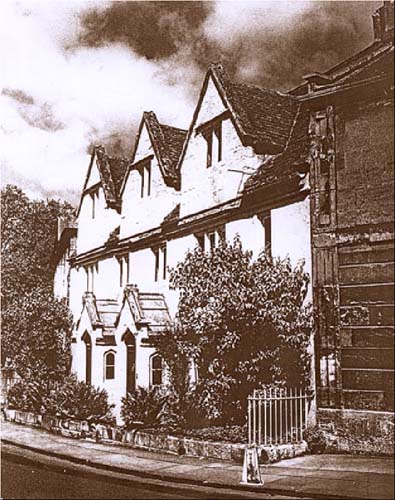
Shrapnell
House, 7 St. Margarets Street today
The Record Office had a collection of Deeds relating to St. Margaret`s Hill. For in the 1960`s there had been demolition of a number of buildings in so called "Slum Clearance", to be replaced with car parking and St. Margaret`s Home. Almost all of these had references to 1,000 year leases on the land with annual rents of £1-£2 per annum.They referred to dates between 1689 and 1698 and were all given by Zachariah Shrapnell, whose family continued to collect them until the 19th Century.
I was able to build up a plan using the 1841 Tithe Map for the area. At the same time Richard Halliday was the owner of the other part of the hill that faced on to Bridge Street. Evidence is an early document describing St. Margaret`s Steps bordering on to "Hallidays Lands" and his initials R.H. 1675 high on the face of the building now known as "The Bridge Tearooms". This date is no doubt that of the purchase of the land, similar to A.M. 1713, which can be seen on the face of the "New Inn" in Freshford, which was the year of the purchase of most of the village by Anthony Methuen. It was this family that leased off a large part of "The Ranks" for building in the 18th Century.It is only by elimination that I was able to approximately date 7 St Margarets St, for the 1660 Poor Rates for Bradford show no records of either the Hallidays or Shrapnells as owners of property.
An aristocratic family called Lisle were major land owners in Bradford at this time and through some detective work and lucky breaks I was able to find references to them in the Deeds to the Lamb Inn(demolished) and the Queens Head (3 Gables). They were extremely wealthy, owning most of the Isle of Wight and were Lords of the Manor of Holt . They purchased a number of properties when the Earl of Clanriccarde disposed of most of his estate in the early 17th Century.They in turn slowly sold off properties in Bradford and there is an Estate Record which details these transactions.They were also linked to the Priory of Monkton Farleigh, and the clue to why the house was originally built c.1600 may be with them. Their is a possibility that it could have been a Stewards house, rather like the Prebend House,opposite was built for the Dean and Chapter of Bristol.
I next researched the Shrapnell Family and was fortunate to locate the Wills for Henry Shrapnell the Elder (1681) and Henry Shrapnell the Younger (1688). The latter`s Will is the more interesting as it also has an inventary of his house.He describes 3 rooms on each floor, much as 7 St. Margarets St is today, without its later additions. The property would have been newly built, as it`s owner is not detailed on the 1660 Poor Rates List for Bradford.He may well have bought the land the same time as Richard Halliday did in 1675 from the Lisle family and erected the house we see today.The first record of the Shrapnell's living in Bradford on Avon is in 1625 when they appear in the Parish Records for Holy Trinity Church.. Over the centuries the family was to have close connections with this Church and there is an imposing Marble to the Family in the Church today. At the top of the list is Henry Shrapnell who is recorded as dying in 1688. Amongst early reference to Henry Shrapnell is his relationship to the Baptist Church near by in St. Margarets Street for in 1662 the churchwardens of Bradford reported the existence of an Anabaptist conventicle in Bradford on Avon. The long list of names included JacobSilby, Richard Godby and Henry Shrapnell. In Bradford the house of John Lydiard was licensed for Baptist worship on 22nd July.1672 and on the same day Henry Shrapnell was licensed as a Baptist teacher or minister. On 30th September the 'barne of John Broome John of Bradford in Wilts' was licensed for Baptist worship. By 1689 it was Jacob Silby and Richard Godby who were to lease land from Zachary Shrapnell as a site for the first meeting house.
Another early deed refers to Henry Shrapnell Junior:.
Indenture dated 28 August 23 Charles II. 1671. John s. & h. of Paul Methwin of Bradford, clothier, dec'd.. for £160 paid in his life time to Paul Methwin. grants to Anthony Druce, of Bradford, clothier, a cott. in Bradford, late ill poss. of Elizabeth Trueman wid. and now of William Gran, a mess. and one yard land, 12a., in Winsley, P. Bradford, in occ. of Thomas Showerne, together with two closes, one called Oake Way , Sa., and the other Lytle Lyes, 4a., in Winsley and of late were parcell of the lands of Budbury Farm and now in occ. of Anthony Druce, and John Methuen appoints his loving friends Paul Methuen, clothier and Henry Shrapnell the younger, his Attorneys. Sig. and seal, John Methwen. Wits. Elizabeth Ashe, William Methwin, William G. Collman his mark. Endorsement that Paul Methwin and Henry Shrapnell on 20 Sept. 23 ; Charles II. entered in peaceable possession of the premises. Sigs. Paul Methwen. Hen. Shrapnell, Attorneys. Wits. Richard Shrapnell, William Chanler, jun., the marke of John Z Dallis. It was his nephew Zachariah who on his inheritence in 1688 was to subdivide the considerable land around the building. He created a number of 1,000 year leases and sold them off between £1 and £2 per annum. Descendants of the family were collecting these ground rents for over 2 centuries.
It was this gentleman who was to dramatically improve the family fortunes by becoming a Clothier. Most of his family had been Coopers, with a branch in Trowbridge who eventually became Brewers owning a number of Public Houses,including the Hart & Cock in Fore Street (now W.H. Smith).Though they were relatively wealthy it was the Cloth Trade where the fortunes were being made in the early 18th Century, as can be seen today with Bradford`s fine heritage of Paladian Houses.
Zachariah purchased a large Estate at Wingfield and refronted and extended the farm house there to reflect his new wealth. At about the same time (c1720) he built himself a new town house (5 St. Margaret`s St) adjoining his father`s old Gabled House (nos.6-7). He is shown in the Town Rates paying for land and houses in Bradfotrd, Leigh, Trowle and Winsley. Zachariah Shrapnell`s Will of 1723 is very interesting and shows him owning 6 houses in St. Margarets St/Morgan`s Hill. Which he left to his Nephew, Zachariah II. The year after his uncles death he married Elizabeth Minifrie.Their Marriage Settlement of 1723 gives the names of the tenants of these houses as :John Bailward, Anthony Sims, Sarah Hopkins, James Morris, Robert Deverall and Elizabeth Alderwick. It is interesting to speculate where these houses were at this time, and which of them would have been 6 St. Margaret`s St. John Bailward in desribed as a cousin of Zachariah, and as is shown by the Shrapnell Family Tree
both Robert Deverell and Elizabeth Alderwicke were also related. The Latter was no doubt living in the house, now on St. Margaret`s Hill where her father had carved his initials above the central window (W.B.A. 1696).
The Wiltshire Record Office has a copy of the Marriage License in 1753 for Zacahiah Shrapnell from Bradford and Lydia Needham of Colerne.
Another of the properties may have been no.8 st. Margarets St (now Bindings) which in 1824 was purchased by the builder James Batten from the Rev. Zachariah Shrapnell Warren, who was a member of the Shrapnell family. It is described as :All that piece or parcel of void ground late the site of 3 messuages or tenements and garden formerly in the occupation of Thomas Brown, Widow Bayly and Issac Gibbs and afterwards of William Holbrook and William Henry (Hanny). Situate and being in St. Margaret's St in Bradford.
No doubt with further research it may be possible by elimination to find the tenant of 6 St. Margaret`s Street after the Shrapnells would have made thier move into their adjoining new built house (no.5) in about 1720. One thing is certain and that is for the latter half of the 18th Century the Kendalls were to rent the house from their relations the Shrapnells. The Poor Rates for Bradford detail The Shrapnell`s paying 7d for their house, 4d for their workshop and the Kendils 3d for 6 St. Margaret`s St. from 1756 until 1780. The workshops at the rear of no 5. can still be seen in a photograph of 1920 ,but have since dissappeared. The Parish records for Holy Trinity show that there were 4 Generations during the 18th Century all with heads of the family named William Kendall. The Will of Zachariah III dated 1794 is very revealing and gives a good insight into the properties they own in the St. Margaretrs area. Benjamin Richardson is a Cloth Worker renting 7 St. Margarets Street (Shrapnell House) and Richard Sheppard is the tenant of the old building that formerly stood in the presnt garden.
There is an extensive Will drawn up by the first William Kendall`s Father in Law, John Hodges, who himself was married to Edith, sister of Henry Shrapnell (the builder of 6 St. Margaret`s St).This gives the impression that William Kendall`s business was involved with the Cloth trade, as John bequeathed him tools of his trade, which was a Serge Maker. The Kendalls were also to receive 2 tenanted houses on Morgan`s Hill (now St. Margaret`s Hill), one of which had the Shrapnells as receiving the Ground Rent.
During the 18th Century 7 St. Margaret`s St would have been owned by 3 generations of the Shrapnells, all with the name Zachariah. Studying the Rate Books for the time reveals that their estate at Wingfiled was nearly always rented out, with their main residence being 5 St. Margaret`s St. From here they ran their successful Cloth Business from the adjoing workshops. Zachariah Shrapnell III (1724-1796) married Lydia(will-1797), daughter of the Rev. Joseph Needham, Vicar of Colerne in 1753. Their marriage License has survived and his father is described as a Clothier.They were to have 9 children, the eldest of whom, Zachariah IV, died at the early age of 33 and in the lifetime of his father. Three other children died in infancy . Their third son, Henry, who inherited the family Estate was the inventor of the Shrapnel Shell.His Sister Elizabeth married William Hamilton Warren in 1794, who was to inherit the 3 properties forming 8 St. Margarets St which they later sold in 1824 to the builder James Batten.
Zachariah III died in 1796 at the age of 71; in his will he asks to be buried without pomp in Bradford Church. He left to trustees the mansion house in which he lived, with the house ( 6 St Margaret's St) and workshops adjoining. He also mentions a house at the bottom of “Nowhere Lane” and others in St. Margaret's St, houses at Bradford Leigh, and his estate called Midway Farm, with farmhouse and Mansion House, then occupied by John Coles Baily (who also had Church farm , Wingfield). The Bradford house was to go to his wife for her life, and after to his son Henry, Captain in the Royal Artillery, and then to Henry's children. To his son Joseph he left an annuity of £100, and to Joseph's wife £100. Zachariah`s daughter Rachel Biddulph received £100, and Elizabeth Warren £200. The house referered to as being at the bottom of Nowheres Lane would have been quite substantial at that time and on the listing(488) for the 1841 Tithe Map is described as an "Old House". It formed a seperate unit with its grounds from 6 St. Margaret`s St, and was no doubt one of the 6 messuages referred a number of times in Wills as belonging to the Shrapnells. It was not until 1866 that it was combined with the other property. Today two walls which incorporate a mullioned window and open fireplace can be seen. Mrs. Bancroft (b.1913) who grew up in 6 St. Margaret`s Street described it as follows:" in the garden there were 2 dilapidated houses. One house we daren't go in but the other house was quite a nice place actually. Upstairs and downstairs- it gradually went to rack and ruin" in a tape recorded in 1989 by Margaret Dobson. It is amazing to think that this and other buildings 1n todays garden for a long time formed 4 dwellings with regular entries in the Town`s Rate Books throughout the 19th Century. At the time of the Tithe Map, Robert Smith, Samuel Hedges, Fred Frankling and James Grinell are recorded as tenants of the Shrapnells for this plot (no.488), with Joseph Joyce (Clockmaker) and William Long (Mason) occupying no.6-7 St. Margaret`s St. (no.456).
On the death of Zachariah Shrapnell IV in 1796 the properties descended to his son General Henry Shrapnell who was to own them for nearly 50 years. For much of his life Henry was abroad or living in London, but is briefly residing at his county estate at Midway, Wingfield from 1822 until 1828. The rate books for Bradford show that in 1807 Richard Grist was the new tenant of 6 St. Margaret`s Street. His Marriage License of 1774 describe him as a Baker aged 28 living in Bradford. He is to rent the building until his death in 1818, later his son is shown as a Baker & Confectioner in Pippet St. Another Baker, Richard Carpenter was to occupy the building in St. Margarets Street and has a listing in the 1822 Pigots Directory. The following 2 years show William Wheatman as paying 3/4d rates for the property. By 1825 William Fricker is the new tenant , and it is this family who were to be associated with the house for almost 100 years. This is also the year in which the building is sub divided and two Gothic Doors and Windows are added to it.For the following year John Davis is paying 1/4d rates and the other part is empty. In 1832 Stephen Mizen is paying 1/4d rates on no. 6 and William Timbrell a similar ammount on no.7 St. Margaret`s Street. Then follows a quick succession of tenants- Emmanuel Hiames, James Harding, William Harding and William Long.The 1841 Census shows theLong Family occupying one half and Joseph Joyce, a Clock maker the other part. The Longs resided in a number of properties in the St. Margaret`s Area. William had a large family, a number of whom were successful builders, it was his grandson Albert who would eventually buy the freehold of the house in 1925.
Though William Fricker (1777-1851) is resident at 6 St. Margarets St in 1825, it is his son, Henry Fricker who is shown with his family as tenants of the house in the 1851 Census. His occupation is described as Plumber, Glazier and Decorator. An advert from the Trowbridge Gazette in 1856 has him as an Auctioner Apraiser, House and Estate Agent. He must do well for by 1866 he is able to buy the House and a number of neighbouring properties from Henry Needham Scrope Shrapnell. An indication of the price paid is the fact that he has an £800 mortgage with Ann Pickard. He continues to live in 6 St. Margaret`s Street and enlarges the garden by taking in the adjoining plot on which the Old House(488) stands which also gave him access to the rear of his property via No Where Lane. Though the family occupy the whole house, at times they are shown in the Town Rates letting part of it . By 1881 Elizabeth Newton(aged 68) moves to this part of the house and is to live there until her death in 1900.
Henry and Ann Fricker bring up 9 children in the house. The 1861 Census shows that he is now a widower with 5 sons at home, all described as plumbers.Five years later he marries Eliza Sedgebeer from Orchardleigh and continues to live in the house until his death in 1899. His son Julius is afterwards shown as the owner after purchasing it in 1874 and rents it out as two separate cottages. Frank Fielding a Tailor is a tenant from 1905 until 1925.. It is in this year that Albert Long , a local builder purchases the Frickers properties. For a while Albert lives here, but in 1936 he sells the property to the Rev. Kirby Turner, who in turn sells it to Mrs Hignell who moves there from Bristol in 1942. Her daughter Elizabeth Hignell is to live there for nearly 60 years. The House was inherited by her nieces in 2002 and subsequently sold to Mr. & Mrs Mattingly by Crisp Cowley.
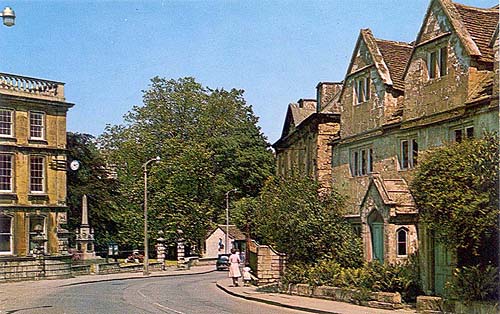
Shrapnell
House, 7 St. Margarets Street as it was in 1964
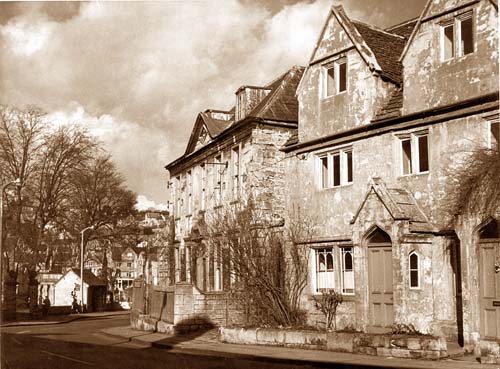
Shrapnell
House, 7 St. Margarets Street as it was in 1970`s
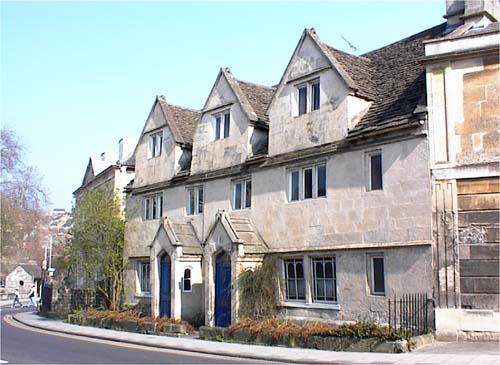
Shrapnell
House, 7 St. Margarets Street as it was in 2003
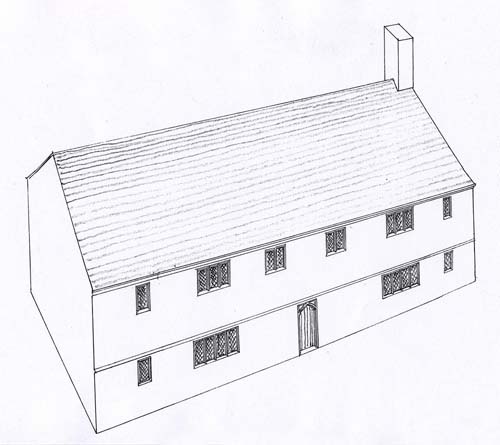
Shrapnell
House, 7 St. Margarets Street as it was in 1600
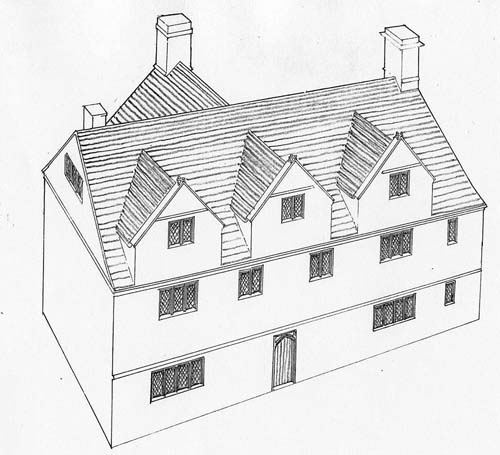
Shrapnell
House, 7 St. Margarets Street as it was in 1690

Shrapnell
House, 7 St. Margarets Street as it was in 1860
